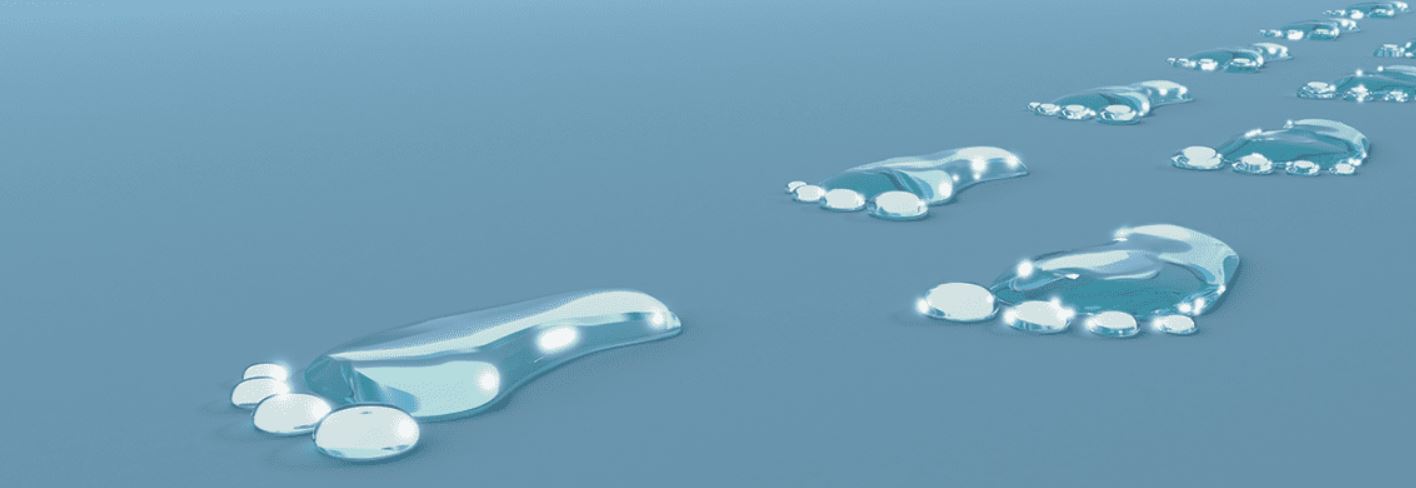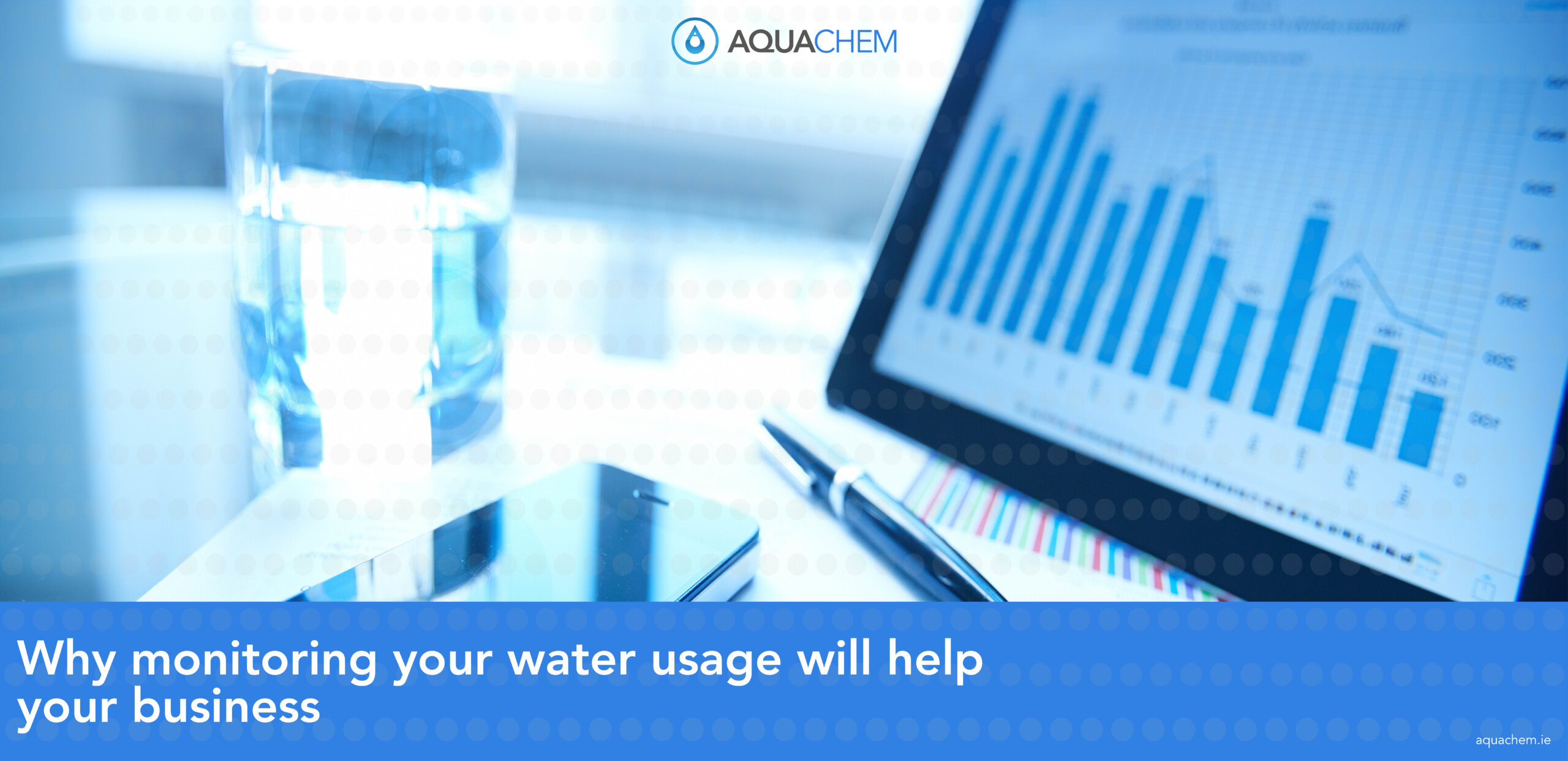Water is an essential part of every business. However, it is often be overlooked as part of a business’ utility strategy, but there are valuable opportunities to be had with a strong water conservation strategy in place.
The average water consumption for office buildings is 50 litres for each employee, every working day. For manufacturing businesses, the average water consumption may be much higher.
Amongst the top water consumption industries are:
- Food and drink production
- Manufacturing of garments and textiles
- Fruit and vegetable farming
- Hotels
- Automotive manufacturing
There is no denying that freshwater resources are drying up and becoming less reliable and so now more than ever the water industry and industries relying heavily on water have started relying on accurate and relevant data to continue production in their fields.

.IF YOU CAN’T MEASURE IT, YOU CAN’T MANAGE IT
Your water footprint is the measurement of the total amount of water consumed to produce goods and services. This can be a combination of the water that goes into the production / manufacturing of a product or services as well as the water used throughout the supply chain.
Understanding your water footprint means understanding where the water is being used, where its use can be reduced, and where the risks in the supply chain are.
Knowing how much water you use, as well as when you use it and why, is the first essential step to saving it. Sure, water seems like a plentiful resource in Ireland, but water requires energy to pump, clean and supply. Like any raw material, if you waste it you’ll pay for it.
Regular water use monitoring is the key to finding leakages and discrepancies in your regular usage – which will help save water. Significant benefits can be realised through becoming more water efficient. These include:
Costs
Water efficiency upgrades often pay back in a few years. Getting on top of leaks and irrigation is the first step and as water prices increase, the more savings you will make over time. Water loss can cost your business thousands every year, money which could be better spent elsewhere in your business.
Environmental
The world is enduring a water crisis at the hands of rising demand, prevalent leaks, reduction in supply and an increase in drought, by conserving as much water as possible you are playing your part in helping reduce the global carbon footprint.
Energy consumption
Saving water will also save your and energy consumption and costs, the more water being used the more energy required for production and usage.
.
.
WAYS TO REDUCE YOUR USAGE
Most industries and businesses are now using digital technologies and systems to pull useful information from their water to produce the data required.
By implementing these new systems (including sensor systems that capture real-time data about everything from water use and water quality to equipment function and system processes) businesses can use a range of data sources to find patterns and innovate solutions that help them conserve more water and improve their facilities’ overall water outlook.
Methods individual businesses can take to reduce their usage include:
- LEAK DETECTION
Undetected leaks can cost your business money and by locating and identifying them you can avoid unnecessary additional costs on your water bill. On-going monitoring of your water usage will enable you to identify leaks and address them much quicker, meaning you save money and valuable resource.
- WATER-EFFICIENT TECHNOLOGIES
Installing water-efficient technology in your business can help you dramatically reduce your water consumption and waste. Technologies such as aerated faucets can help provide a reduced flow, and high-efficiency bathroom fixtures are easy and affordable to install and can
- TARIFF ERRORS
Did you know that 1 in 3 water bills contain errors? Which means you could be unknowingly overpaying on your water tariff. It’s important to take stock of your water bill, particularly with ever-changing tariffs and complex water rate structures. A historical audit can help you identify any previous billing errors and recoup lost costs that you can reinvest back into your business.
- WATER RECYCLING
Recycling your water can save your business money by using modern grey water systems that take wastewater and recycle it for use in boilers and cooling units, to recovery systems which capture and reuse boiler and steam condensate.
- EDUCATION
Lastly, education is key within your business. Informing your employees of how they can help to reduce water consumption can be key. Teaching small things such as turning off taps when lathering hands and making use of reusable water bottles can all add up.
NOW TO MONITOR YOUR USAGE
Monitoring water levels can have numerous environmental benefits and is a popular measurement for different industries and organisations. See below some of the common applications water level monitoring devices;
Installing sub meters
To get the most out of your monitoring program you need to install sub meters throughout the building or site. The sub meters help determine where and how water is being used.
Automatic monitoring systems
A continuous monitoring system is a more efficient way to monitor water use and keep track of multiple sub meters. Continuous monitoring systems save time, identify your water use patterns and make it easier to identify unusual water use.
Manual monitoring
If you don’t have an automatic monitoring system you can keep track of water use with manual readings. You should read the meter at the end of the day and again the following morning. Ideally, meter readings should be very similar.
Continuous online monitoring
If you want to establish an online monitoring system for your building you may have to pay an upfront cost to set up the system and a smaller annual service charge. There are great advantages in being able to access data from any computer and being able to identify problems as soon as they emerge. You can save money in equipment maintenance and upgrade costs.
Conclusion
 Monitoring water use enables you to understand your water use patterns and discover leaks and inefficiencies. Without monitoring, leaks can remain undetected, this means you pay unnecessary water and wastewater charges, iIf you have leaks in your hot water services you’ll pay unnecessary energy bills.
Monitoring water use enables you to understand your water use patterns and discover leaks and inefficiencies. Without monitoring, leaks can remain undetected, this means you pay unnecessary water and wastewater charges, iIf you have leaks in your hot water services you’ll pay unnecessary energy bills.
Having a good water management strategy in place can help support your business with preventing any unnecessary costs such as unidentified leaks, as well as monitoring your water network and proactively reducing your water bill – all the while helping conserve water and play your part in helping fight the current climate.







